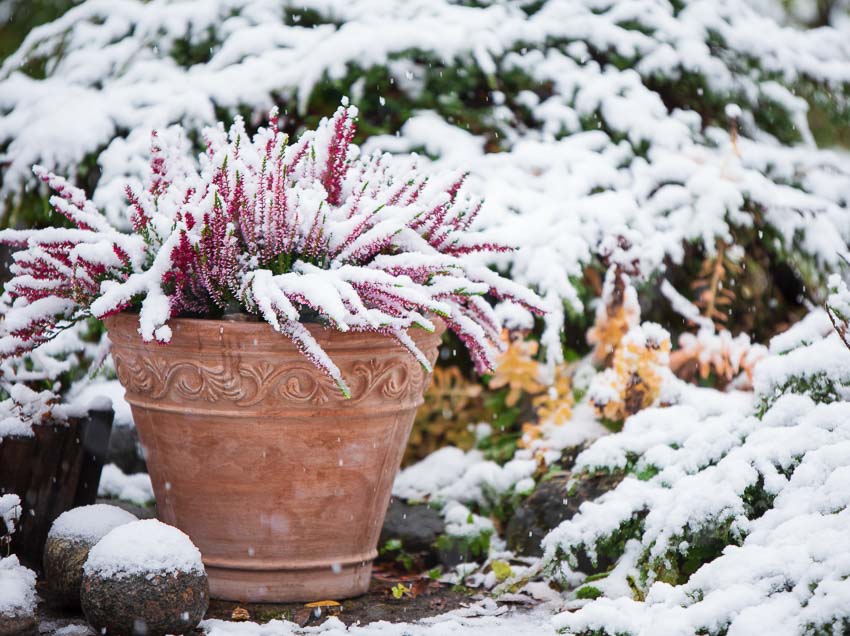As the autumn leaves begin to fall and the days become shorter, winter is fast approaching. This transition period offers gardeners a time to reflect on their successes from the summer, and also to prepare their gardens for winter. Proper winter garden preparation is not only about safeguarding your garden from frost and snow, but also about setting the stage for a fruitful spring. This extensive guide will walk you through the steps and tips to prep your garden for winter, ensuring a flourishing garden when spring arrives.
The Basics of Preparing Your Garden for Winter
Analyzing Your Garden’s Performance
Before you start, take a moment to walk around your garden, noting what worked well and what didn’t. Document what you see to guide your future garden plans.
Cleaning Your Garden Space
Clearing out spent crops, weeds, and debris is a fundamental step in winter preparation. This action helps prevent diseases and pest infestations that can overwinter in the garden debris.
Soil Testing
Winter is the perfect time to conduct soil tests to ascertain its nutrient content and pH levels. Soil testing kits are readily available and easy to use. The results will guide your fertilization plans for the coming growing season.
Detailed Steps to Preparing Your Garden for Winter
1. Harvesting the Last of Your Crops
Root Vegetables
At the onset of winter, it is prime time to harvest root vegetables such as carrots, parsnips, and beets. After harvesting, clean them properly to remove soil and store them in a cool, dark, and well-ventilated place.
Herbs
Before the first frost arrives, harvest the remaining herbs in your garden. You have the option to either dry them naturally or freeze them. Consider making herb-infused oils or vinegar, as they not only preserve the herbs but also offer you flavorful ingredients to use throughout the winter.
2. Removing Dead Plants
At the end of the growing season, your garden will likely have plants that are diseased or dead. It’s essential to remove these plants to maintain a healthy garden environment. Dead flowers and shrubs can become a breeding ground for pests and plant diseases, which can continue to affect your garden in the spring.
Carefully inspect plants for signs of disease or pest infestations, and remove the affected plants from the ground to break the life cycle of pests and diseases.
3. Composting to Prepare Your Garden for Winter

Utilize the plants you’ve removed by adding them to your compost pile, transforming plant waste into a rich soil conditioner. However, if the plants are diseased, avoid adding them to your compost to prevent any future spread of diseases.
Chop the plant material into smaller pieces to facilitate faster decomposition. Remember to turn your compost pile regularly to ensure even decomposition and prevent the growth of mold and other unwanted organisms.
At this stage, it’s also a great time to add other organic fertilizers to your compost, like Fall leaves. Creating a balanced compost with a good ratio of green and brown materials will foster a healthy compost, rich in nutrients for your future garden needs.
Preparing Your Garden Plants for Winter
Mulching
Mulching is an important task in preparing your garden for the winter. This process is crucial in shielding both the soil and the root systems of your plants from the harsh, fluctuating temperatures that could freeze the soil and harm the roots. It also serves the dual purpose of stifling weed growth and keeping unwanted plants from stealing essential nutrients from your soil.
When applying mulch, opt for organic materials like straw, leaves, or pine needles, and lay a generous layer of about 2 to 4 inches thick around your plants. This thick cover not only gets rid of weeds but also helps to trap moisture, reducing the need for frequent watering. It also gradually decomposes, enriching your soil with vital nutrients and improving its structure for the upcoming spring planting season.
Wrapping
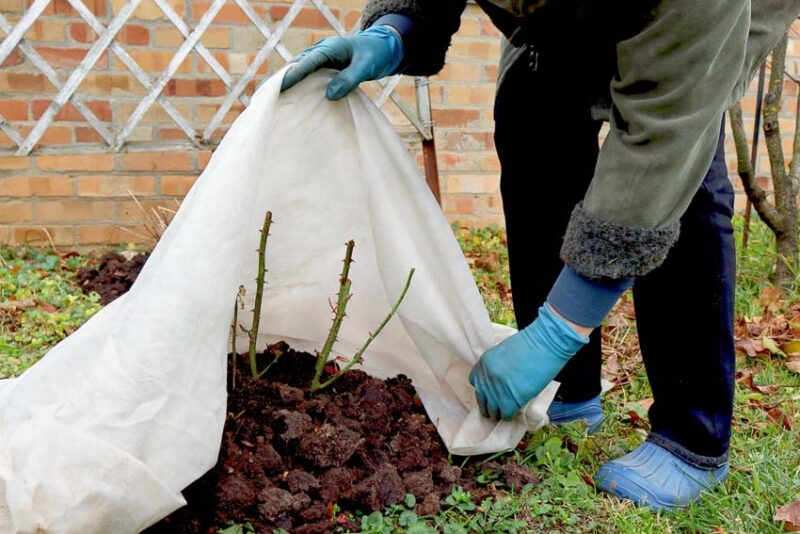
To prepare your garden shrubs and trees for harsh winter winds and heavy snow loads, wrapping is wise. Burlap is a great choice due to its breathability and protective nature.
Wrap the burlap around the shrubs and trees to keep them healthy, starting from the bottom. This aids in reducing damage from winter burn, a common problem where cold winds remove moisture from leaves, leading to browning and potential death of the plant.
Additionally, wrapping prevents breakage and other physical damages that snow and ice can impose.
Creating Windbreaks
In areas prone to strong winter winds, the installation of windbreaks becomes a vital step in winter garden preparation. Windbreaks, such as fences or hedges, can shield your plants from the damaging effects of wind.
This will reduce the rate of soil erosion and provide a form of physical support to your plants, thereby preventing them from bending or breaking under the force of the wind.
To create an effective windbreak, it is advisable to place them perpendicular to the prevailing wind direction. Consider utilizing tall plants or installing structures that are porous to reduce wind speed without causing turbulence. This will safeguard your plants and create a more favorable microclimate, enhancing the survival rate of your plants during the harsh winter period.
Preparing Your Garden’s Soil for Winter
Cover Cropping
Cover cropping is a strategy to both preserve and enhance the condition of your garden soil over winter. Planting cover crops such as clover, rye, or even legumes can offer an array of benefits.
They are excellent in preventing soil erosion, a common occurrence during winter conditions where winds and waters can wash away the topsoil. Moreover, these plants work on improving soil structure, promoting good water drainage, and enhancing the fertility of the soil by fixing nitrogen levels, a necessary element for plant growth.
To implement cover cropping effectively, make sure to choose crops that are suitable for your specific region, hardiness zone , and soil type. Plant them densely to ensure maximum soil cover, and cut them back in the spring before they go to seed to prevent unwanted spreading.
Adding Organic Matter
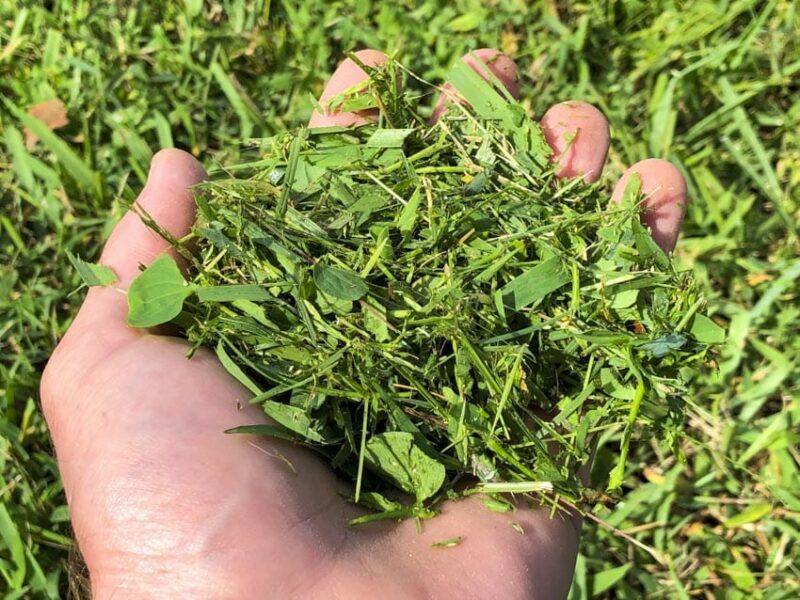
As autumn approaches, take the opportunity to enrich your soil with organic matter, such as well-rotted manure or finished compost. These organic materials introduce essential nutrients into the soil. This improves its texture and water-holding capacity, which in turn fosters a more hospitable environment for plant roots.
When adding organic matter, spread a generous layer on top of your soil and work it in using a fork or a tiller. This practice will prepare the soil well for spring planting. It will ensure it is rich and ready to support new plant life, promoting healthier and more robust plant growth when the next growing season arrives.
Soil pH Adjustment
Achieving the right soil pH is critical for nutrient availability to plants. Typically, most plants prefer a slightly acidic to neutral soil pH, ranging from 6.0 to 7.0. However, some plants may have specific preferences, so it’s wise to undertake soil testing to understand your soil’s current pH level and its nutrient profile.
Based on the results of the soil test, you might need to amend your soil to reach the desired pH level, which would optimize nutrient uptake by plants. To raise the pH, lime can be added, while to lower it, sulfur-based amendments can be utilized.
You should add these gradually while monitoring the pH level to avoid any drastic changes that might harm existing plants.
Lawn Care
Aeration
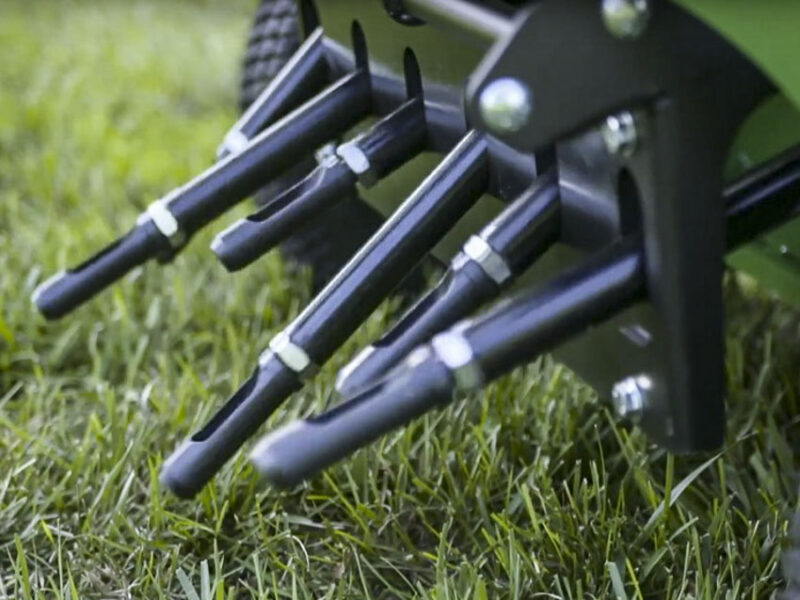
Aeration is a pivotal step in winter garden preparation. It enables essential elements like oxygen, water, and nutrients to efficiently permeate the soil, reaching the grass’s roots.
By using a lawn aerator to create small holes in the soil, you not only facilitate better nutrient uptake but also reduce soil compaction, promoting a healthier lawn. The best time to aerate is during the fall, giving your lawn a chance to breathe before the winter sets in.
Overseeding
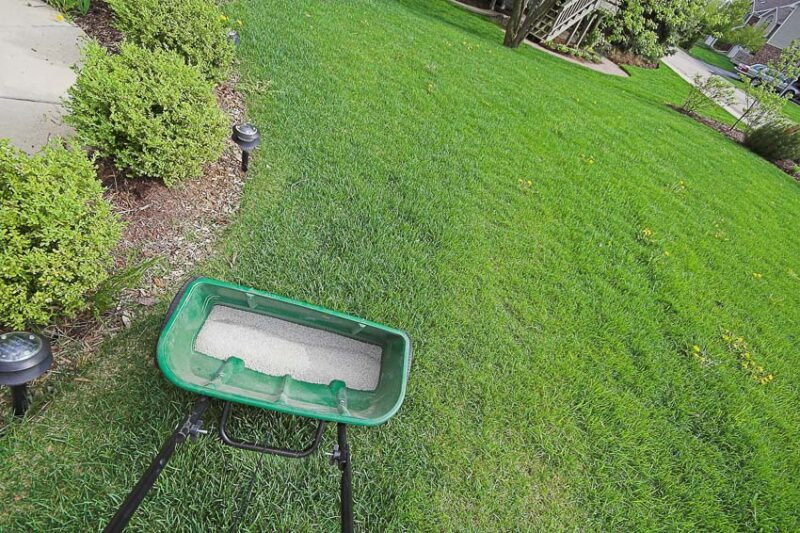
To attain a lush, thick lawn that remains resilient to weed infestation, overseeding is your go-to strategy. It involves spreading grass seed over the existing lawn, which works to fill in thin or bald spots, essentially leaving no room for weeds to establish.
Incorporating a diversity of grass species in your overseed mix can help in creating a disease-resistant and drought-tolerant lawn. Remember to water the overseeded areas sufficiently to foster germination and establishment.
Mowing
While it is necessary to mow your lawn throughout the fall to maintain a neat appearance, it is crucial to adjust your mowing strategy as winter approaches. As you get closer to the first frost date, gradually lower the mower blades with each mowing session but avoid cutting the grass too short.
Keeping the grass at a height of about 2 to 3 inches will prevent winter damage and protect the roots from freezing temperatures.
Garden Infrastructure
Repairing Garden Structures
Winter preparation involves not only tending to plants but also ensuring the readiness of various garden structures like fences, trellises, and raised beds. Inspect these structures for any signs of wear and tear, and undertake necessary repairs to ensure they stand strong throughout the winter and are ready to support your garden endeavors come spring.
This is the time to strengthen loose boards, mend broken fences, and apply protective coatings to wood structures to guard against moisture damage.
Cleaning Tools
Your garden tools have worked hard throughout the growing season, and it’s time to give them proper care before storage. Clean each tool to remove soil and plant residues, sharpen blades of pruners, hedge trimmers, and shears to ensure crisp cuts, and oil metal parts to prevent rusting.
Taking the time to maintain your tools will not only prolong their lifespan but also facilitate easier and more efficient gardening in the spring.
Water Systems
Before the deep freeze of winter sets in, attention must be given to water systems including hoses, sprinklers, and irrigation systems to prevent damage due to freezing and bursting. Drain water thoroughly from hoses and store them coiled to prevent kinks and cracks.
Irrigation systems should be blown out to remove any residual water that can freeze and cause pipe bursts. Taking the extra step to insulate exposed pipes can save you from costly repairs in the spring.
Prepare Your Garden for Winter by Planting for Spring
Planting Bulbs
Fall is indeed the opportune moment to begin planting bulbs that will bloom as spring rolls in. Spring-blooming bulbs like tulips, daffodils, and hyacinths need a cold period to spur their flowering process, making autumn the perfect planting season. Go beyond the common choices and consider incorporating diverse bulb varieties to achieve a succession of blooms throughout spring.
When planting, place the bulbs at a depth three times their size and water them thoroughly to encourage root development. Choose well-drained soil to avoid bulb rot, and find a spot with plenty of sunlight where you can enjoy the blossoms.
Dividing Perennials
As perennials grow, they tend to become overcrowded, which can hinder their health and flowering ability. Fall presents a prime time to divide these plants, ensuring they have ample space to flourish in the upcoming growing season.
To divide perennials, lift the clump from the ground using a spade and separate individual plants by hand or with a tool. Replant these divisions promptly in prepared soil enriched with compost, spacing them adequately. This not only revitalizes older plants but also offers you new plants at no cost.
Preparing Your Garden Perennials for Winter
Perennial plants require protection to weather winter conditions safely. Applying a thick layer of organic mulch around the base of the plants can provide this needed protection. The mulch acts as an insulation layer, shielding the plants from the freezing and thawing cycles that can cause damage to the root system.
It also helps in retaining moisture and preventing weed growth. Consider using straw, leaves, or pine needles as mulching material. Wait until the first hard frost to apply mulch, to avoid attracting rodents looking for a warm place to nest.
Planning for Color and Succession
When organizing your spring garden, visualize a layout that ensures a continuous bloom, keeping the garden vibrant through different seasons. Consider the blooming time of various plants and arrange them in a manner that finishes blooming as one group.
Then another group starts, offering a dynamic display of colors and textures. Incorporate a mix of early, mid, and late-spring blooming plants to achieve this effect.
Labeling
To make your spring gardening smoother, label the areas where you plant bulbs and perennials. This will prevent accidental digging in spring while you are sowing other plants or installing structures. Utilize garden markers or stakes with weather-resistant labels noting the plant variety and any other pertinent information.
Prepare Your Garden for Winter with Wildlife
Bird Feeders
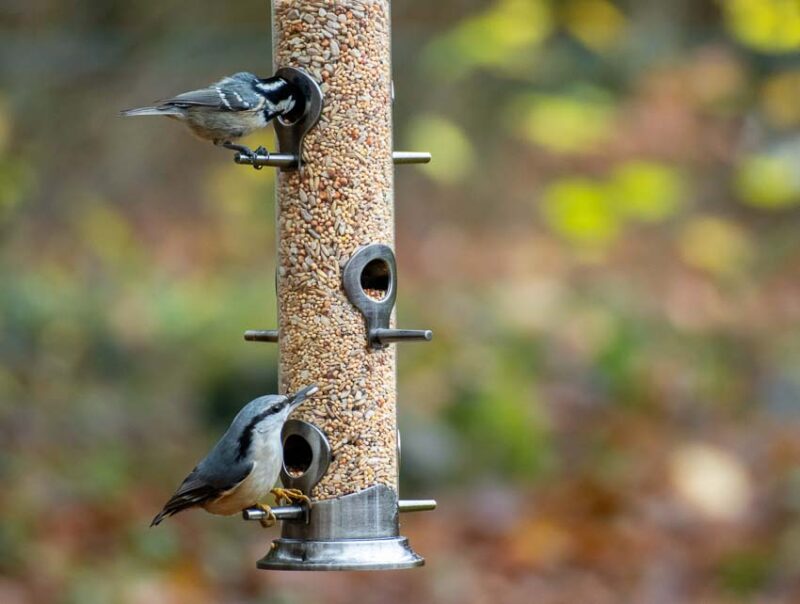
Installing bird feeders is a fun way to invite a variety of birds into your garden, fostering a dynamic ecosystem. Birds not only bring life and song to your outdoor space but also act as natural pest controllers. Indeed, they feast on common garden pests like aphids and caterpillars.
Consider a range of feeders and food types to attract different bird species. For instance, there’s suet for woodpeckers, seeds for finches, and nectar for hummingbirds.
Also, remember to provide fresh water sources for them to drink and bathe, keeping the garden full of flutter and song even in the colder months.
Habitats for Beneficial Insects
In the quieter months of winter, establishing habitats for beneficial insects is important. Leaving sections of your garden undisturbed will foster environments for insects like ladybugs, lacewings, and predatory beetles.
These species control pest populations.
Consider installing insect hotels, which are specially designed structures that offer shelter. Also, cultivating plants with a variety of flower forms can provide nectar and pollen for different beneficial insects. This promotes biodiversity and healthy garden ecology.
Planning for Next Season
Garden Journal
Maintaining a garden journal is not just a record-keeping activity, but a way to reflect on your garden’s journey over the seasons. Document your experiences, the successes, and the challenges faced during the current season. Note down the bloom times of different plants, pest outbreaks, and beneficial wildlife sightings.
Having a rich source of personalized information at hand will allow for more informed and fruitful planning for the coming season. It is also a great space to jot down creative ideas during the off-season, keeping your gardening spirit alive.
Seed Catalogs
With the garden dormant in winter, it is the perfect period to kindle your gardening dreams for the spring. Browsing through seed catalogs is a fun way to think about the potential for the next planting season. They provide a myriad of options and also offer valuable information on new plant varieties and care instructions.
Make a list of plants you wish to grow. Consider your garden’s specific needs in terms of soil type, light conditions, and space.
Conclusion
Preparing your garden for winter is a process that involves both protecting your current plants and setting the stage for a successful spring. From soil management to plant protection and infrastructure maintenance, each step plays a pivotal role in nurturing a healthy garden ecosystem.
Remember, the effort you put in during the fall will reap dividends in the spring, ensuring a garden space that is fertile and ready for planting. Understanding the particular needs of your garden and catering to them during the preparation process is vital.
As you become more in tune with the cycles of your garden, your preparation regimen will become second nature, a rhythm syncing with the changing seasons.
FAQs on How to Prep Your Garden for Winter
1. What steps can I take to prepare my garden plants for winter?
Protecting your plants from cold winter temperatures involves several strategies. These include mulching to insulate the soil, wrapping shrubs and young trees with burlap, and creating windbreaks to shield plants from strong winds. Also, consider moving sensitive perennials to a sheltered location. You can also cover them with frost blankets to provide extra warmth during harsh cold spells.
2. How can I ensure the health of my soil during winter?
To ensure soil health during winter, you can employ strategies like cover cropping with plants like clover and rye that protect the soil from erosion and improve its structure. Incorporate organic matter like well-rotted manure or compost to enhance the nutrient content. Also, based on soil test results, amend the soil to reach the desired pH level, which will enhance nutrient availability to plants in the coming growing season.
3. What is the role of a garden journal in preparing your garden for winter?
Maintaining a garden journal during winter preparation helps in documenting the lessons learned. Moreover, it highlights the successes, and challenges faced throughout the current growing season.
What’s more, it aids in planning for the next season, helping to note pest outbreaks, bloom times, and plant performances. It’s a tool that fosters a deeper understanding and continuity in your gardening practice, helping you grow as a gardener.
4. How do you take care of your garden tools when preparing for winter?
Care for your garden tools by cleaning, sharpening blades, and oiling them to prolong their lifespan and ensure they are ready for use in the spring. You should inspect garden infrastructures like fences, trellises, and raised beds, repairing them as needed.
Water systems including hoses and irrigation systems should be drained to prevent freezing and bursting during the winter.
5. What activities can I engage in to foster garden wildlife during the winter?
Fostering garden wildlife in winter includes installing bird feeders to attract birds, which can help control pest populations. And creating habitats for beneficial insects by leaving certain garden areas undisturbed, providing shelter for insects that help control pests.
Planting berry-producing shrubs and trees, flowering and otherwise, can also provide natural food sources for birds and other wildlife during the winter, enhancing the biodiversity of your garden.

